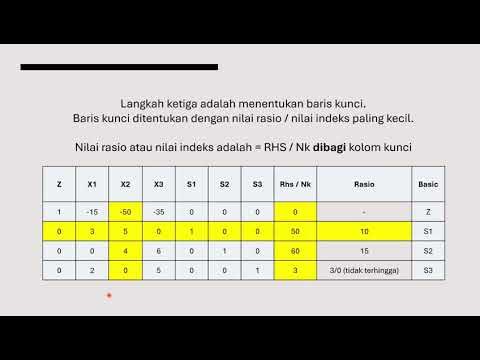Practical use case for fork and pipe in C
Summary
TLDRThis video script explains a method for inter-process communication using pipes to solve a common problem in multi-process programming. It demonstrates how to divide an array and sum its elements using multiple processors, enhancing efficiency. The script guides through creating a pipe, forking processes, calculating partial sums, and combining results. It also emphasizes error checking and suggests an exercise to expand the concept to three processes, showcasing the potential for scaling in larger datasets.
Takeaways
- 😀 The video demonstrates a method of inter-process communication using pipes.
- 🛠️ It addresses a common problem in multiprocessing: summing elements of an array using multiple processors.
- 📊 The solution involves dividing the array into two parts, with each process handling one half and then combining the results.
- 🔧 The script initializes a pipe and checks for errors during its creation.
- 👶 The child process calculates the sum of its assigned array segment and writes the result to the pipe.
- 👨 The parent process reads the partial sum from the child through the pipe and calculates its own partial sum.
- 🔄 The script highlights the importance of parallel execution and the independence of process tasks.
- 🔢 The video provides a practical example with an array of integers and shows how to calculate the size of the array dynamically.
- 📝 Error checking is emphasized, with suggestions to return error codes for failed operations like pipe creation or process forking.
- 💻 The script concludes with a suggestion for further practice: extending the example to handle three processes instead of two.
Q & A
What is the main topic of the video?
-The main topic of the video is demonstrating how to use pipes for inter-process communication, specifically to sum elements of an array using multiple processes.
What problem does the video aim to solve?
-The video aims to solve the problem of efficiently summing elements of an array across multiple processors using parallel processing.
How does the video demonstrate the use of pipes?
-The video demonstrates the use of pipes by dividing an array into two parts, having one process calculate the sum of one part and the other process calculate the sum of the other part, then using a pipe to send one partial sum to the other process for final summation.
What is the significance of dividing the array into two parts?
-Dividing the array into two parts allows the workload to be distributed among two processes, which can then be executed in parallel, taking advantage of multiple processors on a computer.
How does the video handle the creation of a pipe?
-The video handles the creation of a pipe using the `pipe(FD)` function, where `FD` is an array of two file descriptors. If the pipe creation fails, the program returns an error code of 1.
What is the role of the `fork()` system call in the video?
-The `fork()` system call is used to create a new process, which is a child process. The video checks if the `fork()` call is successful by verifying if the returned process ID is not -1.
How does the video ensure that each process knows its start and end index for summing the array?
-The video assigns start and end indices to each process. The child process sums from the start of the array to the middle, while the parent process sums from the middle to the end.
What is the purpose of calculating the 'array size over 2'?
-Calculating the 'array size over 2' determines the midpoint of the array, which is used to divide the array into two parts for parallel processing by the child and parent processes.
How does the video handle the sending and receiving of partial sums between processes?
-The video handles the sending and receiving of partial sums by writing the partial sum from the child process to the pipe and reading it in the parent process, then combining the partial sums to get the total sum.
What is the significance of the error checking in the video?
-The significance of error checking in the video is to ensure that the program can handle and report failures in pipe creation, fork execution, and data transmission, which is crucial for debugging and maintaining robust multi-process programs.
What homework is suggested at the end of the video?
-The suggested homework is to extend the example to use three processes instead of two, having two child processes each calculate a partial sum of a portion of the array, and then send both partial sums to the parent process for final summation.
Outlines

Dieser Bereich ist nur für Premium-Benutzer verfügbar. Bitte führen Sie ein Upgrade durch, um auf diesen Abschnitt zuzugreifen.
Upgrade durchführenMindmap

Dieser Bereich ist nur für Premium-Benutzer verfügbar. Bitte führen Sie ein Upgrade durch, um auf diesen Abschnitt zuzugreifen.
Upgrade durchführenKeywords

Dieser Bereich ist nur für Premium-Benutzer verfügbar. Bitte führen Sie ein Upgrade durch, um auf diesen Abschnitt zuzugreifen.
Upgrade durchführenHighlights

Dieser Bereich ist nur für Premium-Benutzer verfügbar. Bitte führen Sie ein Upgrade durch, um auf diesen Abschnitt zuzugreifen.
Upgrade durchführenTranscripts

Dieser Bereich ist nur für Premium-Benutzer verfügbar. Bitte führen Sie ein Upgrade durch, um auf diesen Abschnitt zuzugreifen.
Upgrade durchführenWeitere ähnliche Videos ansehen

Communication in Client–Server Systems-Operating Systems-Unit-2-20A05402T

5 steps to solve any Dynamic Programming problem

Metode Simplex dengan 3 Variable - Riset Operasional

Chromium's multi-process architecture

How to Solve a Linear Programming Problem Using the Graphical Method

PROGRAM LINIER - METODE GRAFIK - RISET OPERASI
5.0 / 5 (0 votes)
